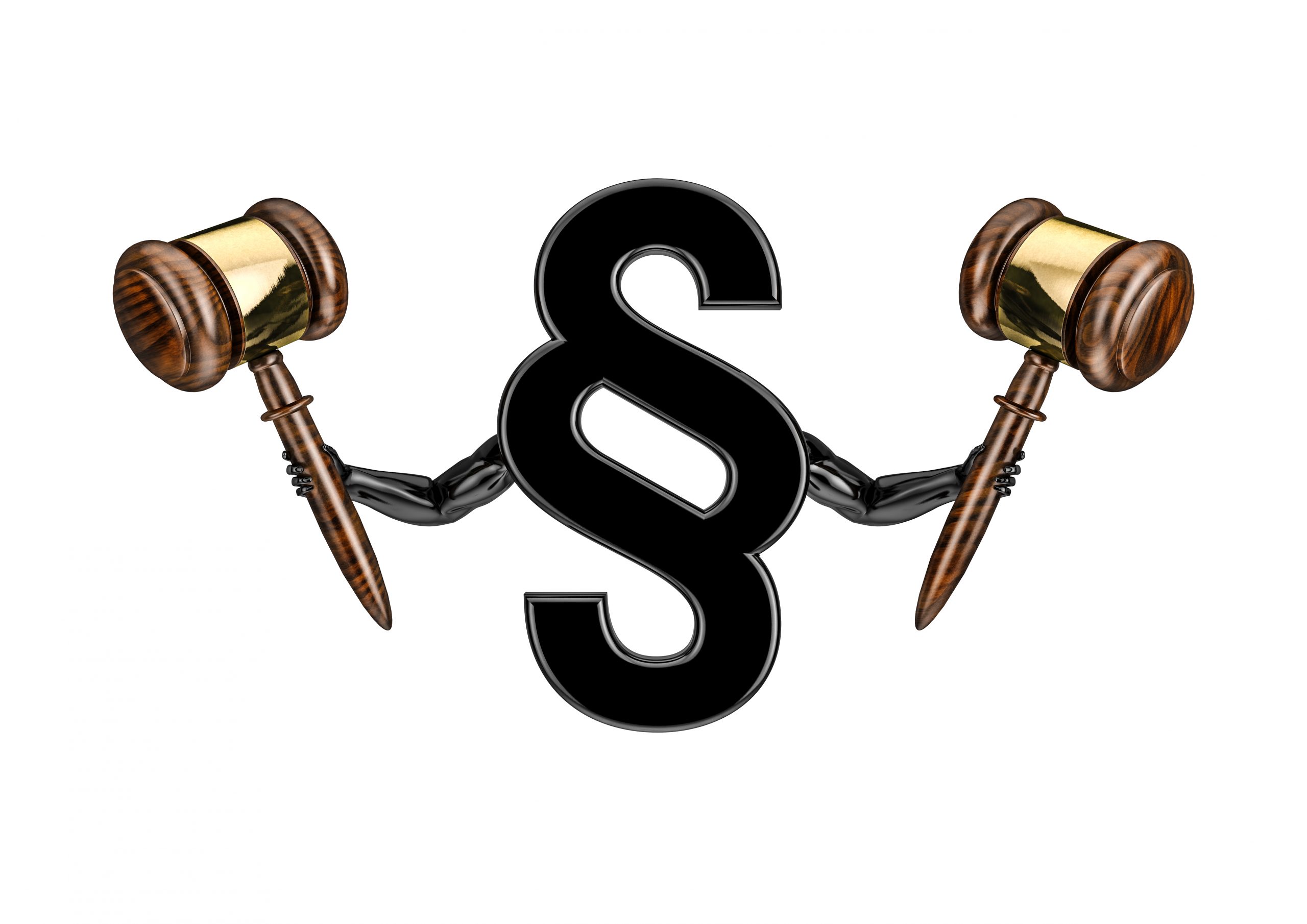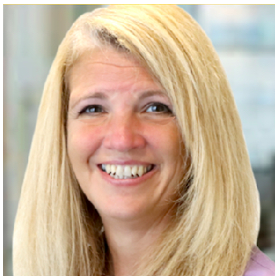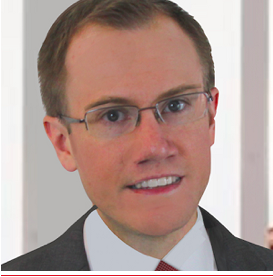“Until there’s more case law or statutory guidance, parties should proceed carefully when seeking to utilize or defend against Section 295.”
 One of the first rules of patent litigation is that the patentee has the burden of proving infringement. Except that’s not always the case. For over three decades, 35 U.S.C. § 295 has allowed a process patentee to flip that burden and require the alleged infringer to disprove infringement—an exception the Federal Circuit once described as a “potent weapon to use against a non-cooperative defendant.” Nutrinova Nutrition Specialties & Food Ingredients GmbH v. Int’l Trade Comm’n, 224 F.3d 1356, 1360 (Fed. Cir. 2000).
One of the first rules of patent litigation is that the patentee has the burden of proving infringement. Except that’s not always the case. For over three decades, 35 U.S.C. § 295 has allowed a process patentee to flip that burden and require the alleged infringer to disprove infringement—an exception the Federal Circuit once described as a “potent weapon to use against a non-cooperative defendant.” Nutrinova Nutrition Specialties & Food Ingredients GmbH v. Int’l Trade Comm’n, 224 F.3d 1356, 1360 (Fed. Cir. 2000).
But this potent weapon is rarely invoked, and even more rarely applied. The Citing References for Section 295 on Westlaw include just 47 decisions. One reason for the dearth of authorities is that the requirements for Section 295 burden shifting can’t be casually established. But they aren’t impossible to meet, either. And it’s worth taking another look at how this powerful tool works, when it can be used, and how to meet the statute’s requirements.
Section 295’s Rebuttable Presumption
Section 295 requires an alleged infringer to disprove infringement if two conditions are met. First, the district court must find a “substantial likelihood” that an accused product was made by a patented process. 35 U.S.C. § 295(1). Second, the court must find that the patentee “made a reasonable effort to determine the process actually used” to make the product “and was unable to [do] so.” 35 U.S.C. § 295(2). If the patentee establishes both conditions, the product “shall be presumed to have been so made,” and the burden shifts to the alleged infringer to show otherwise. 35 U.S.C. § 295; Nutrinova, 224 F.3d at 1359.
Legislative Guidance on Meeting Section 295’s Requirements
Only a small handful of the 47 cases citing Section 295 offer any guidance on how to meet its requirements. Indeed, one district court decision relates how “only one published case” had previously addressed “the test for ‘substantial likelihood’ under § 295(1),” so “both [parties] turn[ed] to the legislative history of the provision for help in understanding what the statute requires.” Aventis Pharm., Inc. v. Barr Labs., Inc., 411 F. Supp. 2d 490, 510 (D.N.J. 2006). And that was after Section 295 had been on the books for 17 years. Case law has continued to trickle in, but the legislative history still provides some helpful guidance on the steps needed to invoke Section 295.
For instance, the Senate Committee on the Judiciary explained that the patentee must establish the “substantial likelihood” requirement using “the evidence that is available.” S. REP. 100-83. This evidence may be circumstantial, but Congress envisioned sufficient evidence as including scientific testing that ties an accused product to a particular manufacturing process, non-speculative expert testimony on costs that rules out all other known processes, or the like. In the House Committee’s words:
Adequate circumstantial evidence … could include telltale signs of the use of the patented process which could be found in the product itself. When chemical processes are used, unique trace impurities or a characteristic pattern of impurities may be present which fingerprint the process of manufacture. Circumstantial evidence also could include a showing that the patent[] and process represent a substantial improvement in efficiency … and that no alternative, economically feasible process exists.
- REP. 100-60 at 17.
And for the “reasonable effort” requirement, Congress explained that a patentee is obligated to use the available discovery procedures to determine the process actually used, “or other good-faith methods, such as requesting the information from the manufacturer, if not subject to U.S. jurisdiction.” S. REP. 100-83. Alternatively, a patentee may show that such efforts “would be futile.” H. REP. 100-60 at 16. Either way, however, Congress contemplated that this requirement wouldn’t be met, and Section 295’s presumption “would be inapplicable,” where the defendant or its manufacturers have used the patented process in the United States and “the discovery provisions of the Federal Rules of Civil Procedure and the equitable powers of Federal courts should be sufficient.” S. REP. 100-83; see also H. REP. 100-60 at 16 (“This presumption addresses a great difficulty a patentee may have in proving [its case] where the manufacturer is not subject to discovery under the Federal Rules.”).
Key Takeaways from District Court Cases
Federal Circuit guidance on Section 295 is limited. But there are at least a few district court decisions where the rubber meets the road and the court decides, based on congressional intent and a detailed discussed of the particular circumstances, whether to shift the burden under Section 295.
In the above-mentioned Aventis case, the plaintiff failed to show a “substantial likelihood” because, at bottom, its expert merely opined that “it is possible” that the defendant’s supplier used the patented process. 411 F. Supp. 2d at 511. By contrast, the plaintiff in Syngenta Crop Protection, LLC v. Willowood, LLC, satisfied that requirement with an expert who relied on laboratory testing, admissions, and commercial reasonableness to opine on the process the defendant’s supplier likely used, notwithstanding the denials of the supplier’s president. No. 1:15-cv-274, 2017 WL 1133378, at *8 (M.D.N.C. Mar. 24, 2017), rev’d in part on other grounds, 944 F.3d 1344 (Fed. Cir. 2019), petition for cert. pending, No. 19-1147. These and other cases thus illustrate that a “substantial likelihood” may not be speculative, but it needn’t be established to a certainty or uncontradicted either. See also, e.g., LG Display Co., Ltd. v. AU Optronics Corp., 709 F. Supp. 2d 311, 336 (D. Del. 2010) (finding plaintiff’s expert evidence “speculative and insufficient”).
Other district court decisions illustrate how—and when—a plaintiff may meet the statute’s “reasonable effort” requirement. For example, even if a plaintiff raises Section 295 early in a case and fails to show a “reasonable effort,” the plaintiff may later be able to do so if it diligently pursues discovery. Thus, one court initially found that a plaintiff had failed to meet this requirement because sending letters to the defendants simply wasn’t enough. But the court later found a “reasonable effort” after the plaintiff sent a witness to the supplier’s factories. West v. Jewelry Innovations Inc., No. 07-cv-1812, 2009 WL 1010848, at *1, *9 n.13 (N.D. Cal. Apr. 14, 2009). And another court similarly reversed course after initially finding that a plaintiff failed to satisfy § 295’s requirements for purposes of a preliminary injunction. Compare Kemin Foods, L.C. v. Pigmentos Vegetales Del Centro S.A. de C.V., 240 F. Supp. 2d 963, 978 (S.D. Iowa 2003) with S.D. Iowa No. 4:02-cv-40327, Docket Item 201-2 at 32 (finding a “reasonable effort” once plaintiff had “followed all of the avenues of discovery,” including “written discovery requests, facility inspections, first-hand observation of the process, independent testing of process samples, the use of experts, and depositions of [defendant’s] officials”).
To be sure, there seems to be no downside to patentees raising Section 295 early in a case, as courts reexamine the issue as necessary during discovery. And although the Federal Circuit has held that “the court has every right to exercise its discretion in determining at what point in the decisional process the statute will be brought into play,” Nutrinova, 224 F.3d at 1360, this doesn’t mean patentees are entitled to raise Section 295 at any time. In RevoLaze LLC v. J.C. Penney Corp., Inc. (a currently stayed case in which the authors represent JCPenney), the Eastern District of Texas explained that waiting “until the very end of the discovery period” to assert a Section 295 theory deprives the alleged infringer of “a fair opportunity to conduct discovery,” especially “where the amendment would open the door to shifting the underlying burden of proof.” No. 2:19-cv-43-JRG, 2020 WL 2220158, at *3 (E.D. Tex. May 6, 2020). And defendants in other cases have objected to raising the statute on the basis that the timing was prejudicial. See, e.g., MCRO, Inc. v. Bandai Namco Games Am. Inc., C.D. Cal. No. 2:12-cv-10322, Docket Item 701 at 10, 2018 WL 3862381 (June 14, 2018 Reply Brief).
In addition, the more discovery patentees seek, the greater their chances of establishing their entitlement to burden shifting. This is true regardless of whether it’s arguable that a method of requesting information from a manufacturer is necessary to show “reasonable efforts.” Thus, although an expert may be able to identify the process that a manufacturer used based on physical evidence produced in discovery, a patentee would be wise to make other efforts to reach out to that manufacturer. As the Central District of California explained in Nichia Corp. v. VIZIO, Inc., a decision vacated after settlement: “While examination of the devices by Plaintiff’s expert is an important tool in understanding the manufacturing process, so too is seeking information directly from the manufacturers themselves.” No. 8:16-cv-545, 2019 WL 1966665, at *3 (C.D. Cal. Mar. 25, 2019), vacated 2019 WL 7281927 (Apr. 16, 2019).
And consistent with the legislative history’s guidance, these cases all attempt to balance the difficulties in obtaining discovery from foreign entities with requiring the patentee to make a reasonable showing of infringement.
Looking Ahead
Until there’s more case law or statutory guidance, parties should proceed carefully when seeking to utilize or defend against Section 295. Patentees should invoke Section 295 early and follow all available avenues to obtain discovery regarding the accused process. These include seeking extra-territorial discovery and requesting to observe the relevant manufacturing process. And alleged infringers shouldn’t attempt to hinder that investigation, but rather seek to develop their own facts to support their case and to rebut the “substantial likelihood” prong of the statute.
Even though parties have the currently available guidance to assist in shaping their discovery efforts, the slow trickle of case law applying Section 295 is likely to leave many questions and circumstances unaddressed. So the statute’s potent but rarely invoked burden-shifting mechanism—which, as of August, has been on the books for 32 years—may be fertile ground for new and creative arguments.
Image Source: Deposit Photos
Image ID:89106334
Copyright:grandeduc

![[IPWatchdog Logo]](https://ipwatchdog.com/wp-content/themes/IPWatchdog%20-%202023/assets/images/temp/logo-small@2x.png)


![[Advertisement]](https://ipwatchdog.com/wp-content/uploads/2024/04/Patent-Litigation-Masters-2024-sidebar-early-bird-ends-Apr-21-last-chance-700x500-1.jpg)

![[Advertisement]](https://ipwatchdog.com/wp-content/uploads/2021/12/WEBINAR-336-x-280-px.png)
![[Advertisement]](https://ipwatchdog.com/wp-content/uploads/2021/12/2021-Patent-Practice-on-Demand-recorded-Feb-2021-336-x-280.jpg)
![[Advertisement]](https://ipwatchdog.com/wp-content/uploads/2021/12/Ad-4-The-Invent-Patent-System™.png)







Join the Discussion
No comments yet.